
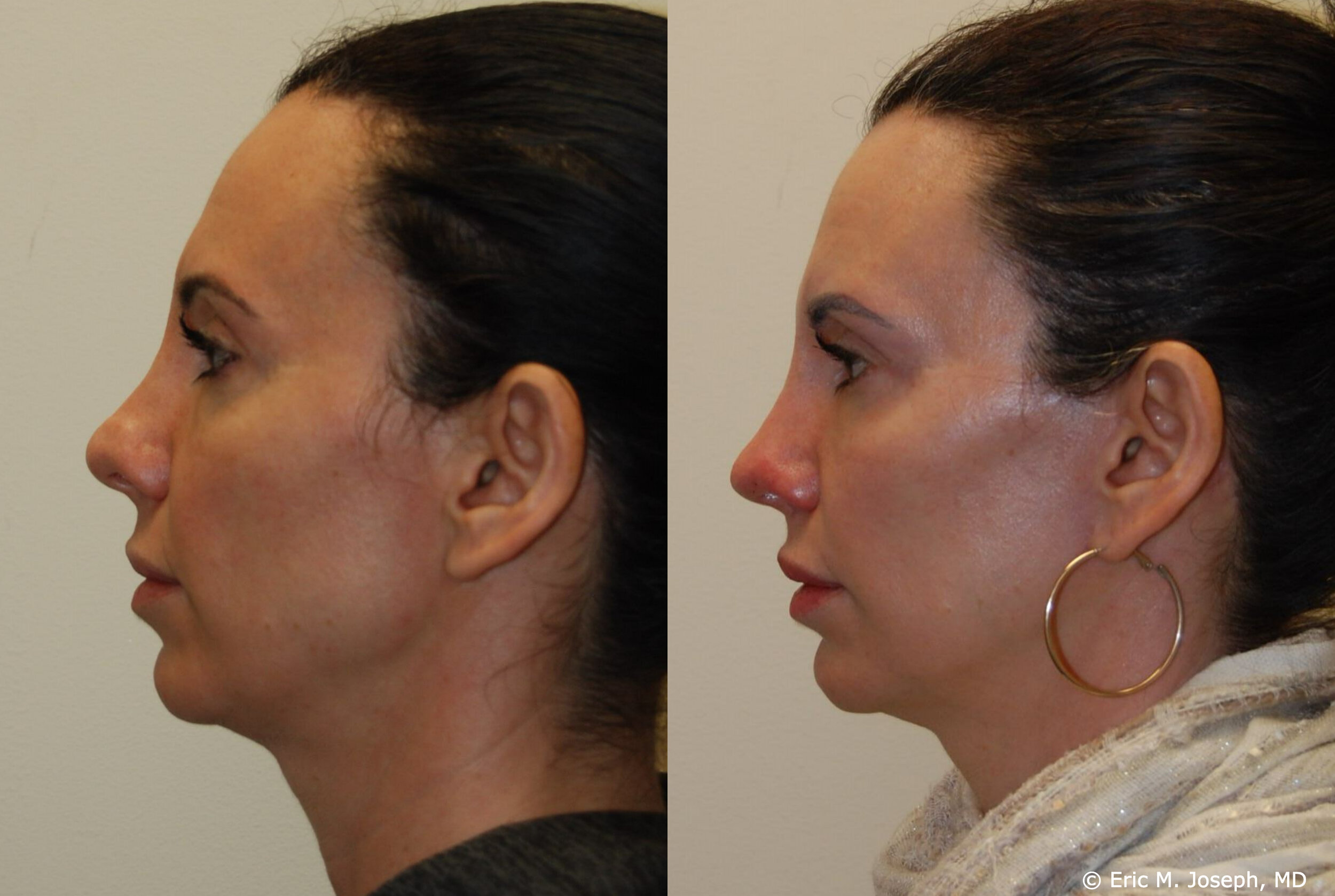

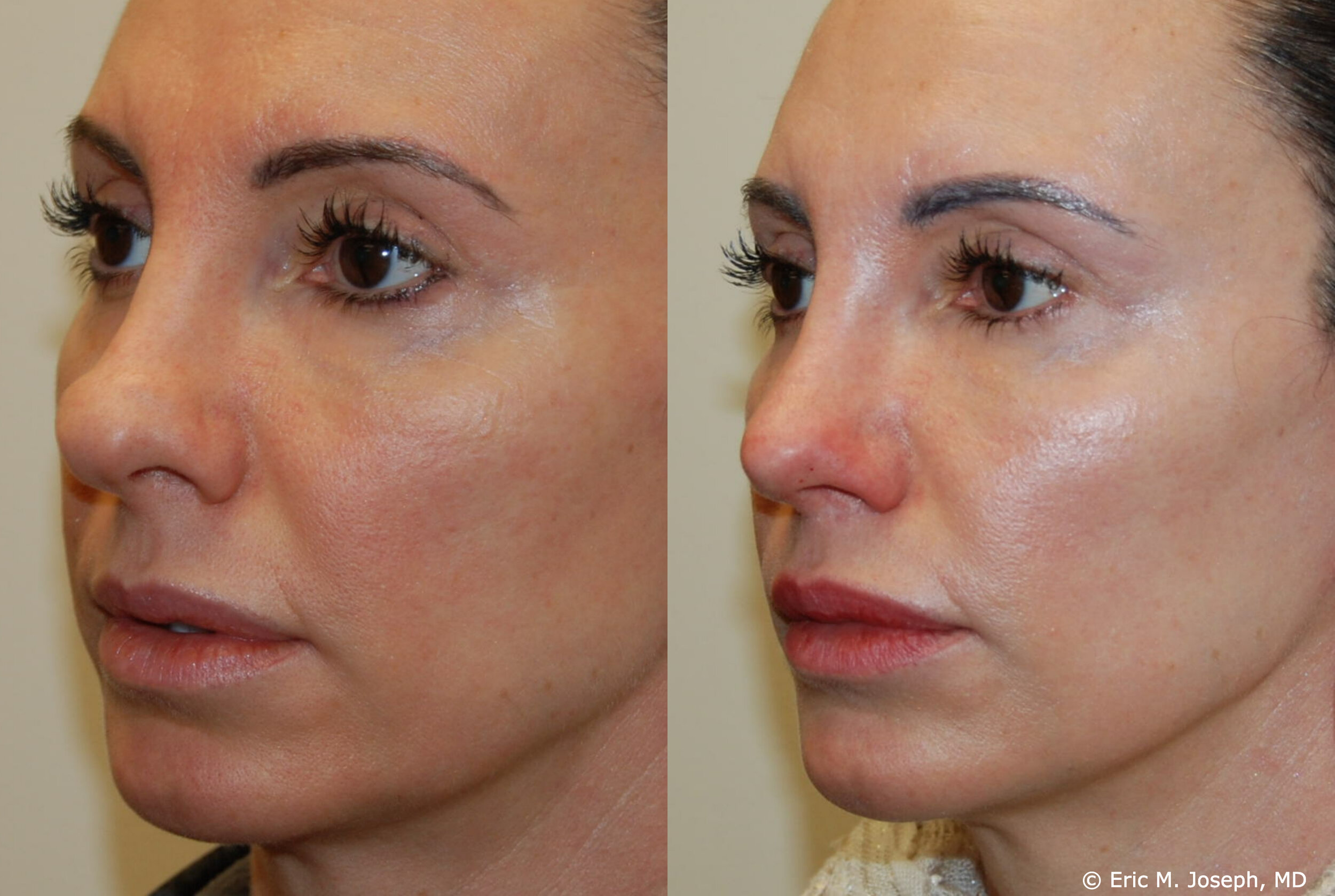
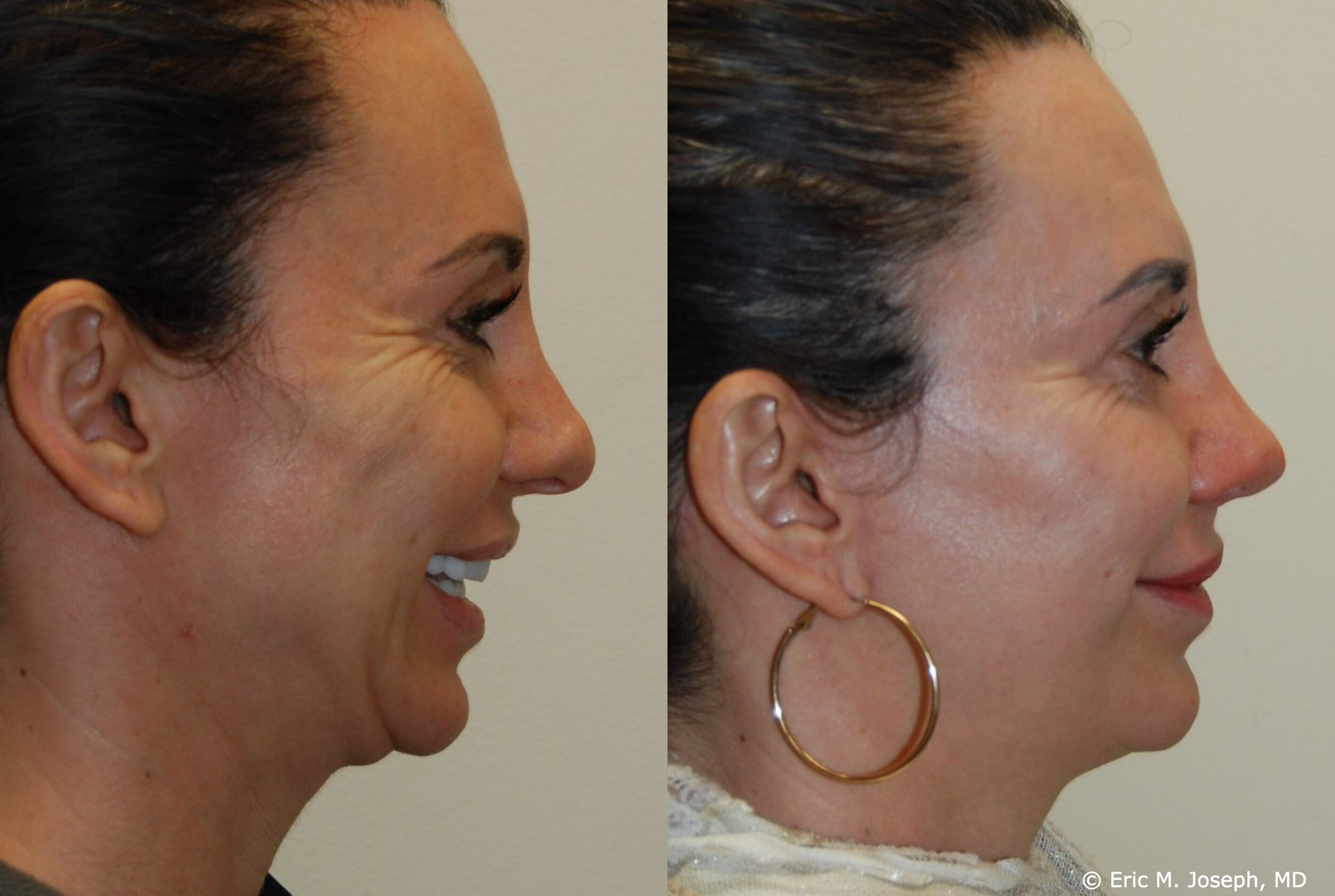
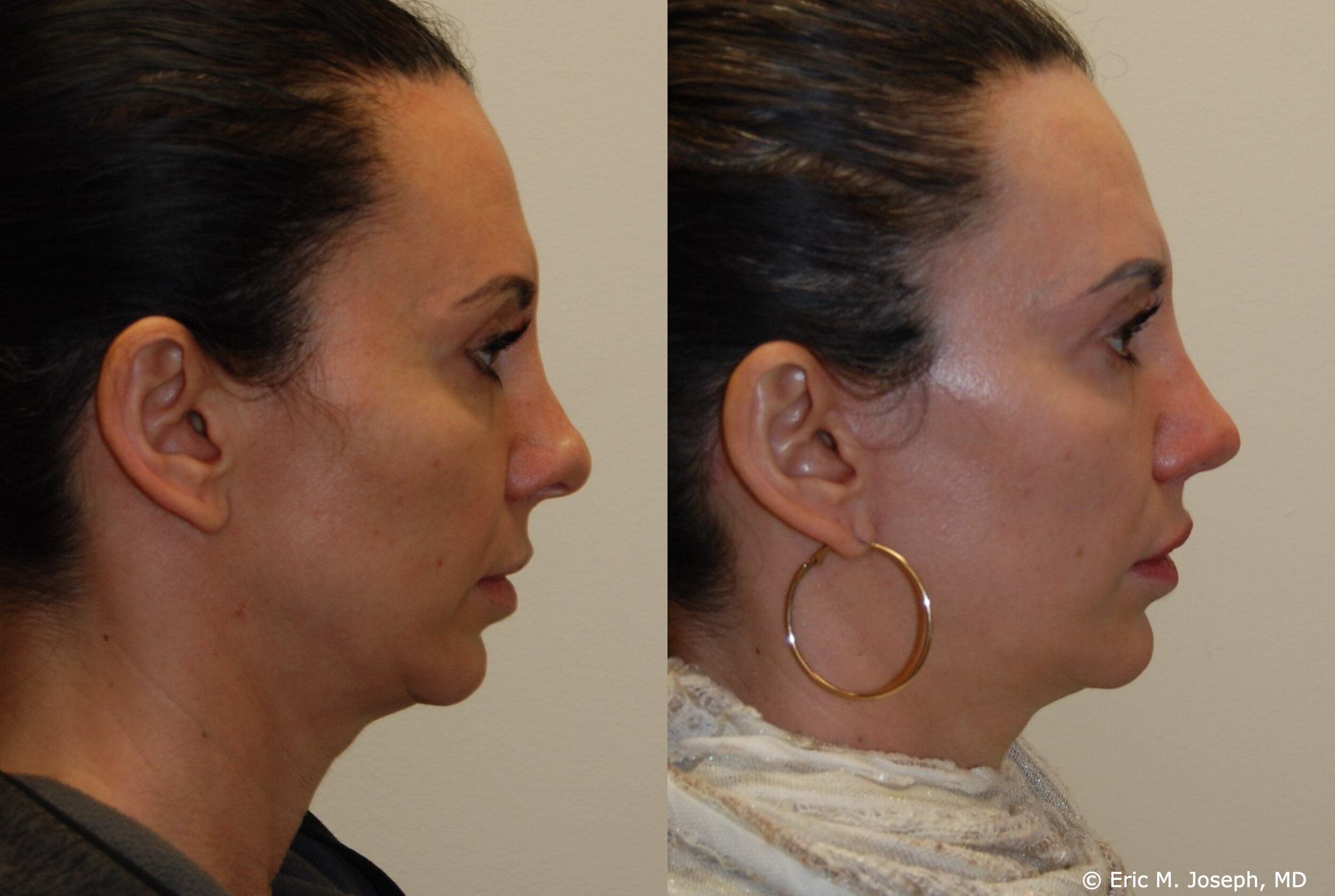
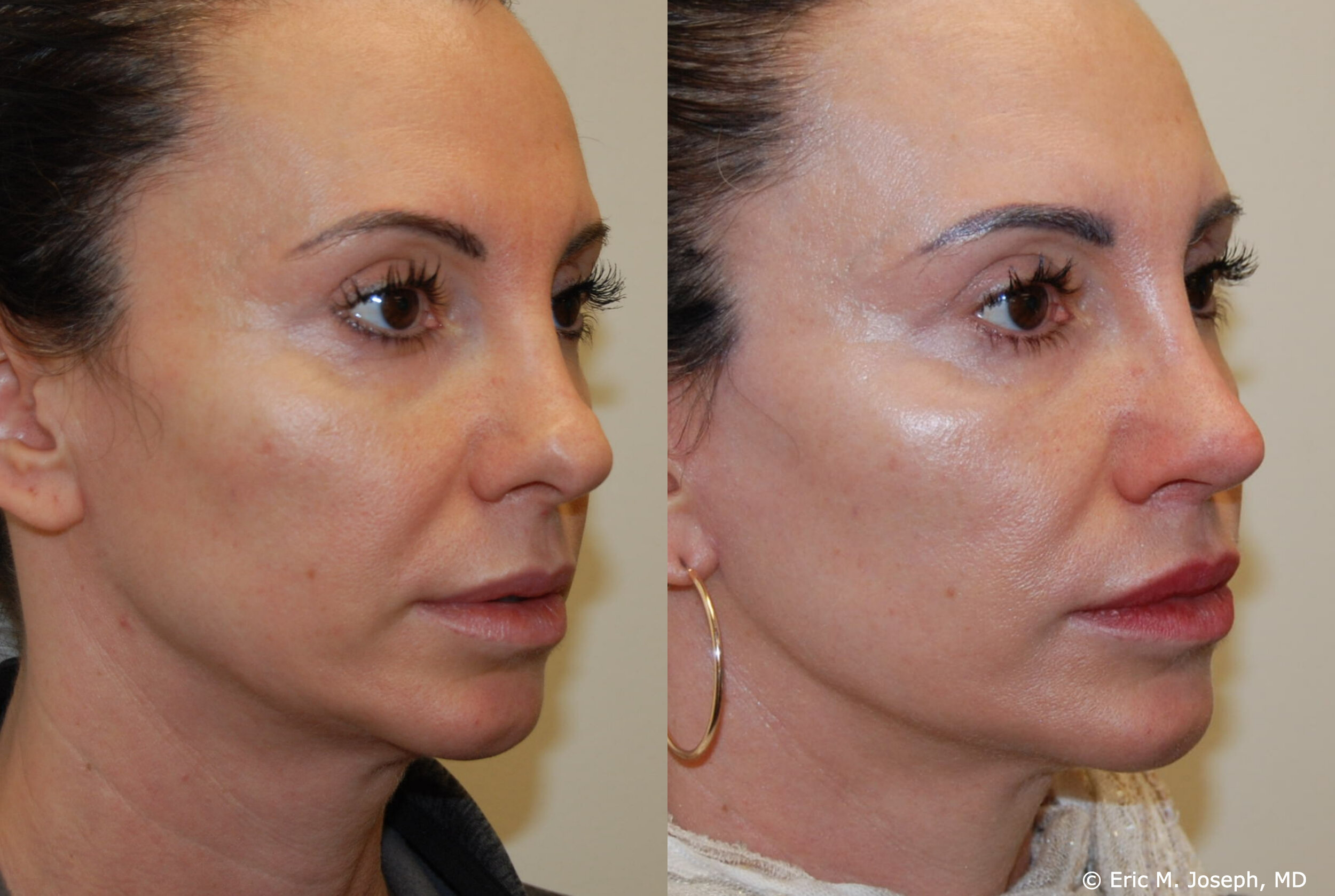
Revision Rhinoplasty #21
Our beautiful 44 year old patient is seen 16 months following tertiary revision rhinoplasty - that means after her third rhinoplasty. Her first two procedures were performed by another surgeon. Our patient had nasal obstruction and she was unhappy with her persistently wide nasal appearance and bulbous nasal tip appearance. During her surgery, it became clear that her previous surgeon removed too much tip cartilage. She required tailoring of her remaining tip cartilages, and total tip reconstruction with alar batten grafts. These are also called "lateral crural extension grafts" since they replace or strengthen the nasal tip while opening the external nasal valves. Our patient also required repair of her "poly-beak", which is an excessively high dorsal septum above her tip. The top of her nasal bones were rasped, and osteotomies were performed to achieve narrowing of the upper 2/3 of her nose. She additionally required cartilage spreader grafts on both sides to reconstruct her internal nasal valves. You can see a natural looking nasal appearance that breathes better.
A prospective revision rhinoplasty patient should be carefully evaluated in-person for candidacy. The results of revision rhinoplasty surgery will be the centerpiece of our patient’s face. The esthetic endpoint of successful surgery is to allow our patient’s nose to blend in, and become less distracting—not to transform the centerpiece into a masterpiece. Our patients must accept that the goal of revision rhinoplasty surgery is improvement, not perfection. Your revision rhinoplasty consultation is the first, and best time to determine whether your goals may be achieved through additional surgery. During the consultation we determine, to the best of our ability, that if all goes as planned, our patients will be pleased with the outcome of revision rhinoplasty. We may observe while taking a history, that revision rhinoplasty may be suitable from an esthetic standpoint, but careful listening, questioning, examining, and computer imaging may be necessary to ensure that our patients have realistic goals and expectations.